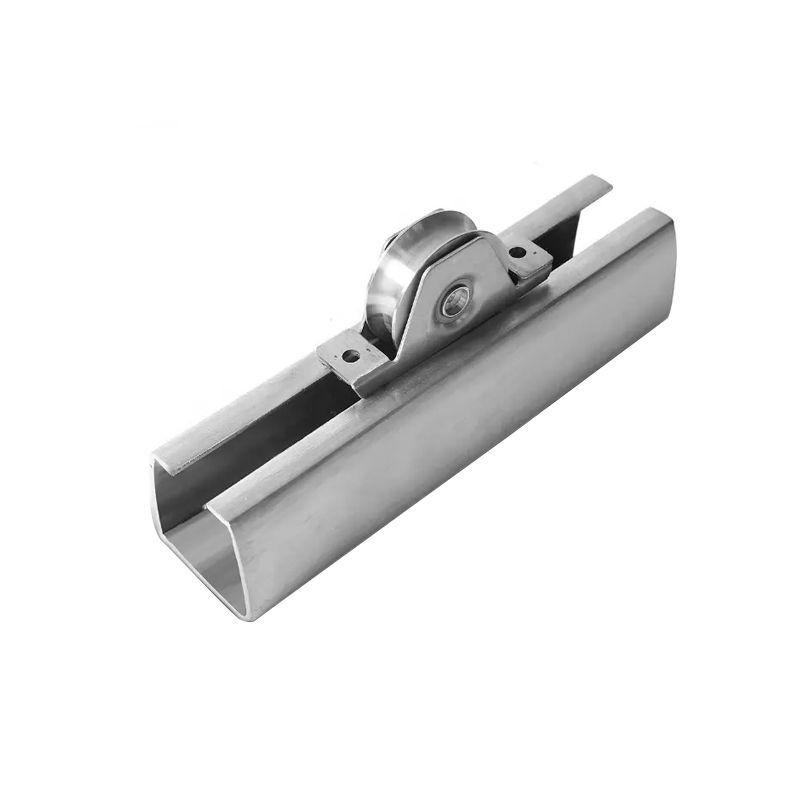No. 200 Gaoxin RD, Shanghua St, Lanxi, Zhejiang, P. R China
The Surface Heat Treatment Rack Pinion Gear is a precision-engineered ...
See DetailsSliding gates are widely used in residential, commercial, and industrial settings due to their space-saving design and reliable security features. The smooth operation of these gates depends heavily on the components that facilitate their movement—namely, sliding gate tracks, rollers, and wheels. Understanding these parts, their functions, and their variations is essential for selecting, maintaining, and troubleshooting sliding gate systems effectively.

Sliding gate tracks and rollers work together to enable a gate to move horizontally along a set path, ensuring ease of operation and durability
over time. The track is typically a metal rail fixed to the ground or a supporting structure, serving as the guiding path for the gate's movement. The rollers or wheels are attached to the bottom or sometimes the top of the gate and run along this track.
The primary function of the sliding gate track is to provide a stable, straight pathway for the gate to travel. It must be robust enough to handle the gate's weight and withstand environmental factors like rain, dust, and temperature changes. Common materials for tracks include galvanized steel or stainless steel, which offer resistance to rust and corrosion.
Rollers complement the track by bearing the gate's weight and facilitating smooth, low-friction movement. Typically, these rollers are mounted on brackets connected to the gate's frame and are designed to roll along the track with minimal resistance. The efficiency of the rollers significantly affects how easily the gate opens and closes. Poorly designed or worn rollers can cause the gate to stick or wobble, increasing wear on other components.
The combination of properly installed tracks and well-maintained rollers ensures the gate moves steadily and quietly. Regular inspection and cleaning of these components help prevent debris build-up, which can disrupt operation. Proper lubrication of rollers is also important to reduce friction and extend the lifespan of the system.
Sliding gate wheels are a critical part of the gate's rolling mechanism, directly affecting the ease of movement, durability, and overall performance. Different types of sliding gate wheels are available, each suited to specific gate designs, weights, and environmental conditions. Understanding these types helps in choosing the right wheels for a particular application.
Steel Wheels: Steel wheels are among the commonly used sliding gate wheels. They are known for their strength and durability, making them suitable for heavy gates, including those made from metal or thick wood. Steel wheels typically feature ball bearings to facilitate smooth rotation. However, steel wheels may require protective coatings or maintenance to prevent rust, especially in outdoor environments exposed to moisture.
Nylon Wheels: Nylon sliding gate wheels are lighter and quieter compared to steel wheels. They offer good resistance to corrosion and wear, making them a suitable choice for gates exposed to humid or wet conditions. Nylon wheels are often used in residential gates where noise reduction is desirable. Although they have a lower load capacity than steel wheels, high-quality nylon wheels can handle a reasonable amount of weight.
Polyurethane Wheels: Polyurethane wheels combine some of the advantages of both steel and nylon. They are durable, resistant to abrasion, and provide smoother and quieter operation. Polyurethane wheels also offer some shock absorption, which protects the gate's frame and track from impact damage. These wheels are commonly used in applications requiring moderate load capacity and quieter operation.
V-Groove Wheels: V-groove wheels are designed to run on a track with a corresponding V-shaped rail. This design ensures lateral stability, preventing the gate from slipping off the track. V-groove wheels are usually made of steel or nylon and are common in industrial sliding gates where precise alignment and high load capacity are necessary.